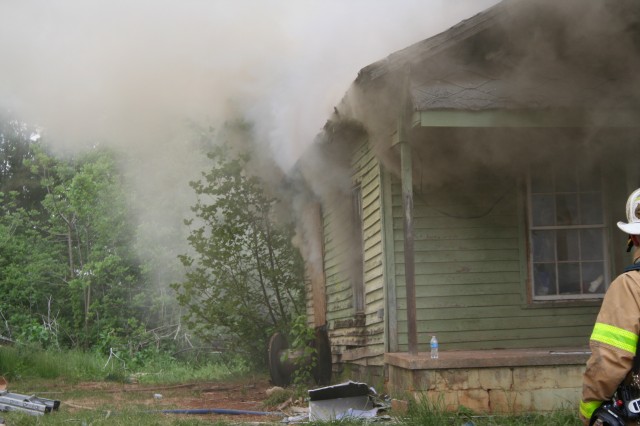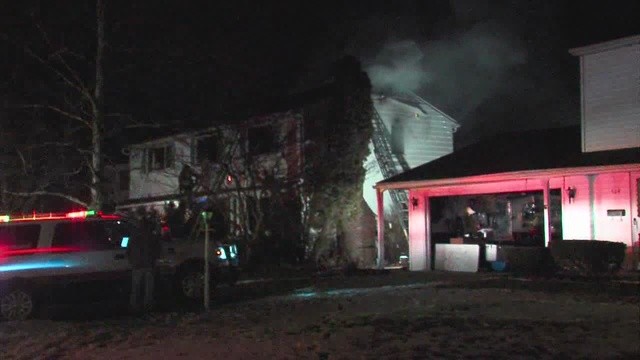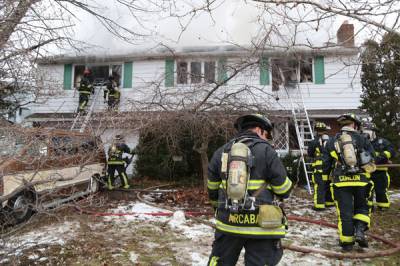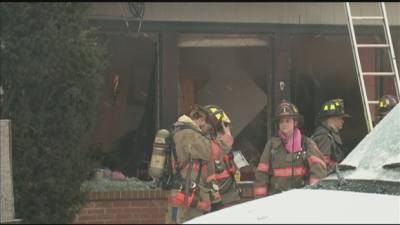How much risk are you willing to take? While attending the
2013 Ohio Fire and EMS expo in Columbus Ohio last week it seemed clear that first responders don’t fully understand Hoarding Dangers and how they can affect safety. Having the opportunity to travel and meet the brave men and women who serve as first responders is a HUGE honor. In this past week’s travel is where this lack of understanding became crystal clear in these conversations.It’s like clockwork that when someone hears that I am studying responses in Hoarding Conditions they immediately start into a story of a response. These stories always involve the words “lucky” and/or “fortunately” something happened or it could have been bad. As an educator these words are like fingernails on a chalkboard.
[caption id="" align="alignright" width="265"] Hoarding Dangers: Glassware Image from http://hoardingwoes.wordpress.com/2012/09/30/hoarding-the-glassware/
I would like to share two conversations that came from Ohio. Sharing these conversations is not a judgmental or an effort to “bash” anyone, but rather an attempt for everyone to learn from their experience.
Hoarding Danger in Piles:
The most troubling story was, by far, the firefighter who described a fire where they had to crawl over piles and piles of belongings to fight the fire. They described hoarding at a level 3 and went on to explain that the interior firefighters had to crawl over multiple stacks of belongings to access the fire, which sounded rather small.
The conversation described the difficulties of traversing the stacks and how “lucky” they were to make the fire room and have a successful firefight. With the hair standing up on the back of my neck I began to question them and after some time the “I never thought of that’s came”. Often we all don’t think of a certain danger until someone exposes us to it. Their response is common when dealing with hoarding conditions. Without being judgmental we should all be exposed to the danger possessed by the stacks of stuff.
Let’s review some of the factors and why firefighters should not crawl over stacks of stuff and exactly how dangerous it is.
- Stability of the Piles
- What are the Stacks Comprised of (magazines, books, Glassware)
- Collapse Risk
- Entrapment dangers (wires, yarn, extension cords)
- Weight of the firefighter
- Need for rapid escape
- Height of Stacks (putting firefighter closer to the ceiling and hotter temps)
Each of the above danger can place a firefighter in a life or death situation at a moment’s notice. Mix one with another and a recipe for disaster is on the horizon.
Example: Firefighters making an interior push choose to crawl over a stack of glassware. The weight of each firefighter plus gear added to the instability of the stacks causes a collapse of the stack downward then adding a side collapse covering the firefighters with sharp glass.
You can see the dangers in the above example. Not knowing what is in the piles of belongings should be the number one reason why we should NOT crawl over stacks of belongings. Adding the weight of a firefighter to an unstable situation can lead to a mayday. Do the occupants crawl over the stacks or walk around them?
Occupants use the pathways to access the usable space inside the house and so should we. Using the “goat paths” for interior access is the safest way to gain interior access without collapsing piles of belongings on beneath the firefighters. Think about walking to the stage of a theater, would you crawl over the rows of seats or use the isle to access the stage.
It was a Clean Hoarder House:
Another hoarding story from this trip was a assistance call where they described a Clean Hoarder Environment. This mindset is troubling because of the hidden dangers that may not be seen because of the accumulation of belongings.
[caption id="" align="alignright" width="240"]

How clean can it be. Hoarding Dangers
While the environment may look “clean” from the view point of a responder, do we truly know what lies beneath the hoard. Without access to walls, rooms, and the inability to see the floor do we truly know what’s underneath the stacks of stuff. The answer is NO.
Stacks of belongings in the home can hide dangers for first responders. Rodents, insects, mold, and animal excrement’s can all be dangerous to responders and all can be hiding beneath stacks of stuff that appear to be clean. Without the ability to clean and maintain a home, due to the hoarding, the occupant may never truly have the ability to clean, sanitize, or remove problem areas. This accumulation can be dangerous for them and us.
If you find a hoarding condition that must be entered we MUST assume the worse situation possible and choose to wear our PPE properly. Assuming that the hoarding area is “clean” is an assumption that can lead to Bio Hazard exposure. Once discovered we should take the appropriate precautions and choose to wear ALL of our PPE to make sure we don’t care these dangers home to our families.
Review:
Emergencies in hoarding conditions should be identified, adjusted for, and then attacked with different approaches by all first responders. Crawling over debris and not choosing to wear proper PPE are just two dangers that could cause injury or death. Make the choice to avoid them both when, not if, you are called to enter the hording environment.













 How clean can it be. Hoarding Dangers
How clean can it be. Hoarding Dangers














